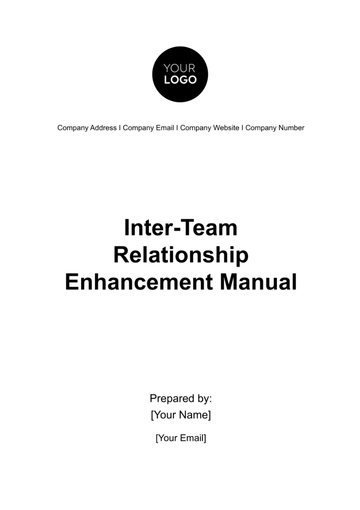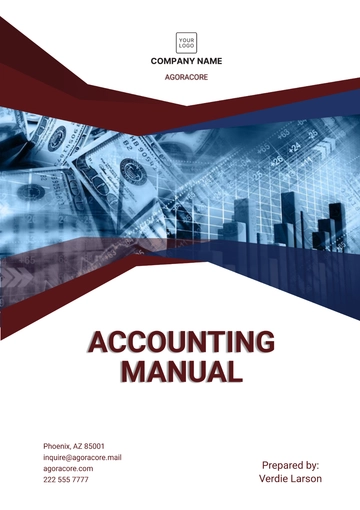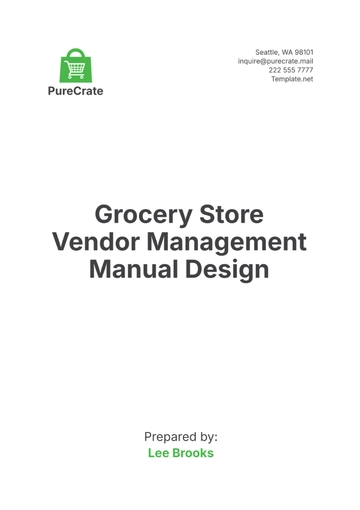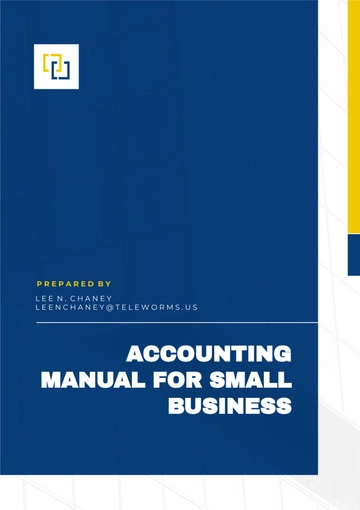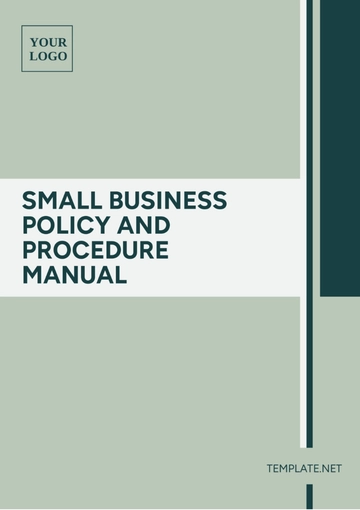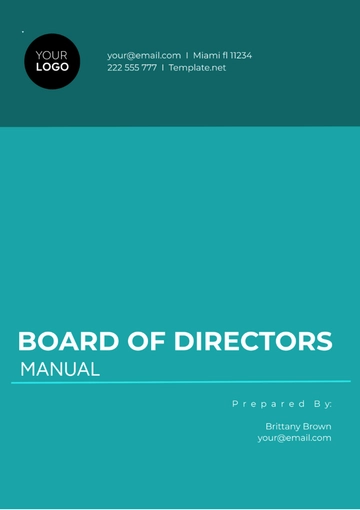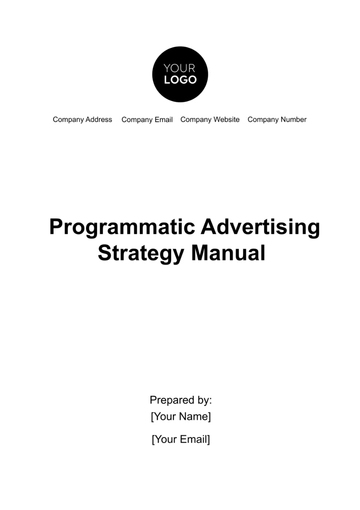Free Finance Budget Training Manual

Introduction
Welcome to the Financial Budget Training Manual, a comprehensive resource designed for finance professionals. In today’s dynamic and competitive business environment, mastering these aspects is not just a necessity but a pivotal factor in a company's success. This manual is crafted to provide a thorough understanding of the intricacies of financial management, encompassing everything from basic financial statement analysis to advanced budgeting techniques and risk management strategies.
The purpose of this manual is to equip you with the skills and knowledge necessary to effectively navigate the complex world of corporate finance. Whether you are a novice in the field or looking to refine your existing skills, this manual offers valuable insights and practical tools to enhance your financial acumen. Through a blend of theoretical concepts, real-world examples, and practical exercises, you will gain a deep understanding of how to analyze financial data, develop and manage budgets, forecast future financial scenarios, and ensure regulatory compliance and ethical standards in financial reporting.
As you progress through this manual, you will encounter a mix of detailed explanations, illustrative tables, and fictional case studies. These elements are designed to not only impart knowledge but also to develop your ability to apply these concepts in real-life situations. The ultimate goal is to prepare you to contribute effectively to your organization's financial health and strategic decision-making process.
Overview of Financial Planning and Budgeting
Definition and Importance
Financial planning and budgeting are integral components of a company's strategic planning process. Financial planning involves the long-term projection of future revenues, costs, and capital requirements, while budgeting refers to the allocation of financial resources for the short-term operational needs of the business.
Table 1: Key Differences between Financial Planning and Budgeting
Criteria | Financial Planning | Budgeting |
Time Frame | Long-term (3-5 years) | Short-term (Annually) |
Key Principles
The success of financial planning and budgeting hinges on several key principles:
Accuracy: Ensuring that all financial data and projections are as accurate as possible.
Flexibility: Being able to adapt to unexpected changes in the market or business environment.
Realism: Setting achievable targets based on historical data and realistic assumptions.
Alignment with Corporate Goals: Ensuring that financial plans align with the company’s overall strategic objectives.
Understanding Financial Statements
Balance Sheet Analysis
The balance sheet provides a snapshot of a company's financial position at a given point in time. It includes assets, liabilities, and shareholder equity.
Assets
Current Assets: Cash, accounts receivable, inventory.
Non-current Assets: Property, plant, and equipment, intangible assets.
Liabilities
Current Liabilities: Accounts payable, short-term debt.
Long-term Liabilities: Bonds payable, long-term lease obligations.
Shareholder's Equity
Common stock, retained earnings.
Table 2: Sample Balance Sheet Analysis
Item | Amount (in millions) | Notes |
Total Current Assets | $50 | High liquidity observed |
Total Non-current Assets | ||
Total Liabilities | ||
Shareholder’s Equity |
Income Statement Analysis
The income statement reflects the company's financial performance over a specific period, showing revenue, expenses, and profit or loss.
Key Components
Revenue: Sales from goods or services.
Cost of Goods Sold (COGS): Direct costs attributable to goods produced or services provided.
Operating Expenses: Costs related to the day-to-day operations.
Net Income: The final profit or loss after deducting all expenses from revenue.
Table 3: Sample Income Statement
Description | Amount (in millions) | Notes |
Total Revenue | $200 | Steady growth in sales |
COGS | ||
Gross Profit | ||
Operating Expenses | ||
Net Income |
Cash Flow Statement Analysis
The cash flow statement provides insights into the cash inflows and outflows from operating, investing, and financing activities.
Operating Activities: Includes cash received from customers and cash paid to suppliers and employees.
Investing Activities: Relates to purchases and sales of assets.
Financing Activities: Involves borrowing, repaying loans, and equity transactions.
Analyzing cash flow helps in understanding the liquidity and solvency of the business, crucial for effective budgeting.
Budgeting Process
Types of Budgets
In corporate finance, several types of budgets are utilized, each serving a specific purpose:
Operational Budget: This budget focuses on the income and expenses related to the day-to-day business operations. It's typically prepared on an annual basis.
Capital Budget: Deals with expenses related to the acquisition or maintenance of long-term assets like machinery, buildings, and technology.
Cash Flow Budget: A projection of all cash receipts and expenditures, helping in managing liquidity.
Table 4: Comparison of Budget Types
Budget Type | Purpose | Time Frame | Key Components |
Operational | Day-to-day activities | Annually | Revenue, operating expenses |
Budget Development
The development of a budget follows a systematic process:
Data Collection: Gathering historical financial data and current market trends.
Forecasting: Estimating future revenues and expenses based on collected data.
Resource Allocation: Distributing resources in line with strategic priorities.
Approval and Revision: Presenting the budget for management approval and making necessary adjustments.
Table 5: Budget Development Process
Step | Description | Responsible Party |
Data Collection | Collect and analyze past financial data | Finance Team |
Financial Forecasting and Modeling
Techniques and Tools
Financial forecasting uses statistical tools and models to predict future financial outcomes. Common techniques include:
Linear Regression: Analyzing the relationship between variables to forecast future trends.
Moving Averages: Smoothing out data series to understand underlying trends.
Advanced software tools like Excel, Tableau, and specialized financial modeling software are often employed for these analyses.
Scenario Analysis
Scenario analysis involves examining the impacts of different hypothetical events on the company's financial health.
Table 6: Scenario Analysis Example
Scenario | Description | Impact on Revenue | Impact on Expenses |
Optimistic | High market demand | Increase by 20% | Increase by 10% |
This kind of analysis aids in preparing for various potential future situations, making the budgeting process more robust and adaptable to change.
Variance Analysis
Identifying Variances
Variance analysis is crucial in comparing the budgeted (planned) financial outcomes with the actual financial performance. The primary goal is to identify areas where the company is over performing or underperforming.
Favorable Variance: Occurs when actual revenues are higher or actual expenses are lower than budgeted.
Unfavorable Variance: Happens when actual revenues are lower or actual expenses are higher than budgeted.
Table 7: Variance Analysis Example
Financial Aspect | Budgeted | Actual | Variance | Variance Type |
Revenue | $500,000 | $550,000 | $50,000 | Favorable |
Interpreting Variances
After identifying variances, the next step is to understand their causes. This might include market conditions, operational inefficiencies, or changes in cost. This interpretation helps in making informed decisions for future budgeting and strategic planning.
Performance Measurement
Key Performance Indicators (KPIs)
KPIs are quantifiable measures used to evaluate the success of an organization in meeting its objectives. Selecting the right KPIs is crucial for effective performance measurement.
Table 8: Sample KPIs for Financial Performance
KPI | Description | Target |
Return on Investment (ROI) | Measures the efficiency of investments | > 15% |
Benchmarking
Benchmarking involves comparing the company’s performance metrics with industry standards or competitors. This practice helps in identifying areas for improvement and developing strategies to enhance performance.
Table 9: Benchmarking Example
Metric | Company's Performance | Industry Average | Status |
Net Profit Margin | 20% | 15% | Above Industry |
Risk Management in Budgeting
Identifying Financial Risks
Risk management in budgeting involves identifying potential financial risks that could impact the company’s fiscal health. These risks could range from market volatility to operational inefficiencies.
Market Risk: Changes in market conditions that could affect sales or costs.
Credit Risk: The risk of loss due to customers' inability to pay.
Operational Risk: Risks arising from internal processes, people, and systems.
Table 10: Financial Risk Identification
Risk Type | Description | Mitigation Strategy |
Market Risk | Fluctuations in market demand and prices | Diversifying product range, market analysis |
Mitigation Strategies
Once risks are identified, developing strategies to mitigate them is essential. This includes diversification, insurance, and establishing contingency funds.
Regulatory Compliance and Reporting
Compliance Requirements
Staying compliant with financial regulations is critical for any organization. This includes adhering to tax laws, financial reporting standards, and industry-specific regulations.
Table 11: Compliance Checklist
Compliance Area | Requirement | Compliance Status |
Tax Laws | Timely and accurate tax filing | Compliant |
Reporting Standards | Adherence to GAAP or IFRS guidelines | Compliant |
Industry Regulations | Specific regulations (e.g., banking, healthcare) | Compliant |
Conclusion
This training manual serves as a comprehensive guide that covers various critical dimensions of financial planning, budgeting, and analysis. The journey through this manual has equipped you with a broad spectrum of tools and knowledge, from understanding the nuances of financial statements to developing sophisticated budgeting strategies and risk management techniques.
- 100% Customizable, free editor
- Access 1 Million+ Templates, photo’s & graphics
- Download or share as a template
- Click and replace photos, graphics, text, backgrounds
- Resize, crop, AI write & more
- Access advanced editor
Utilize Template.net's Finance Budget Training Manual Template to revolutionize your financial education delivery. It's completely editable, customizable, and seamlessly tailored using our Ai Editor Tool. Embellish your business documents and graphics with our innovative platform's powerful, user-friendly utilities. Instantly elevate your financial training capabilities.
